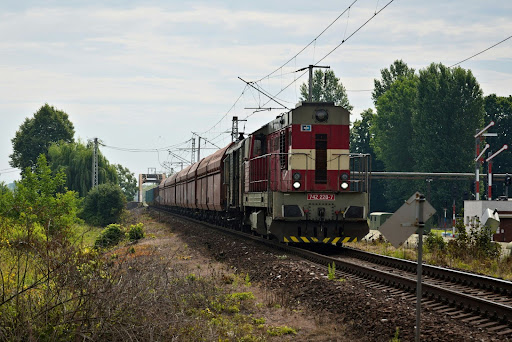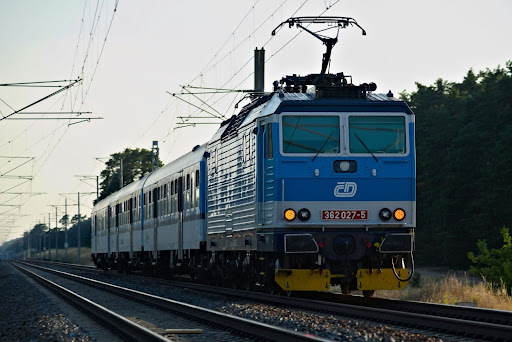
As global transportation systems evolve, the debate over the most sustainable and cost-effective modes of rail travel intensifies. Electric and diesel railway systems represent two dominant technologies, each with distinct advantages and challenges.
In this article, we’ll look at the electric vs diesel locomotive debate by comparing the two in terms of their operational efficiency, financial implications, and environmental footprints.
With a deeper understanding of how they differ from one another, you can gain critical insights about their viability and the future of rail transport overall.
Electric vs Diesel Railway Systems
Let’s discuss in detail how each railway type compares according to these aspects:
Efficiency
When evaluating efficiency to generate answers amid the electric vs diesel locomotive debate, we need to look at three key factors: energy consumption, acceleration capabilities, and operational maintenance.
Energy Consumption
Electric railway systems are generally more energy-efficient than their diesel counterparts. Electric trains convert electrical energy into motion with a higher efficiency rate—often exceeding 90%. Additionally, electric trains can benefit from regenerative braking, which allows them to return energy to the grid when slowing down, further enhancing their efficiency.
In contrast, diesel engines typically operate at about 30-40% efficiency, primarily due to the energy losses associated with fuel combustion and mechanical conversion.
Acceleration
Electric trains are known for their superior acceleration capabilities. They can reach higher speeds more quickly than diesel trains, making them ideal for high-speed rail services and urban transit systems. This rapid acceleration is particularly advantageous in commuter rail scenarios, where frequent stops and starts are common.
Diesel trains, while capable of sustaining high speeds, often take longer to reach their peak performance due to the inherent limitations of their engines.
Operational Flexibility
While electric railway systems shine in terms of efficiency on electrified lines, diesel offers operational flexibility in regions where electrification is economically unfeasible. Diesel locomotives can operate on non-electrified tracks, making them a versatile choice for mixed-use rail networks. This flexibility allows for a more extensive reach in rural or less densely populated areas where infrastructure investments in electrification may not be justifiable.
Maintenance
Electric trains generally require less maintenance than diesel locomotives, primarily because they have fewer moving parts and do not rely on complex combustion systems. Besides, some parts of electric trains are out of reach of people who can easily destroy and vandalize. Overhead catenary system components like the cantilever and the contact wire, for instance, are suspended above the electric train railway tracks, unlike the key parts of a diesel train that are on the ground.
This reduced need for maintenance in electric trains can lead to lower downtime and higher overall availability, further enhancing their operational efficiency.
Cost
When comparing these two types of railway systems in terms of cost, we need to look at how they fare in terms of:
Initial Capital Investment
The upfront capital costs for electric railway systems can be substantially higher than those for diesel systems. Electrifying a railway line involves significant infrastructure investments, including the installation of overhead wires or trackside electrification equipment, substations, and signal systems. These costs can be prohibitive for engineering companies , especially in regions where rail networks are underdeveloped.
Conversely, diesel locomotives require lower initial investments, as they can operate on existing tracks without the need for electrification, making them more accessible for regions with budget constraints or limited rail infrastructure.
Operational Costs
Once operational, though, electric trains often demonstrate lower variable costs. The price of electricity is typically more stable and can be cheaper than diesel fuel, especially as renewable power sources become more prevalent. Additionally, electric trains benefit from lower maintenance costs due to fewer moving parts and the absence of complex engine systems.
On the other hand, diesel locomotives face higher fuel costs and more frequent maintenance requirements, which can lead to increased operational expenditures over time.
Subsidies and Incentives
Government policies and subsidies also influence the cost landscape. Many governments like the United States are increasingly promoting electrification as part of their sustainability goals, leading to grants and incentives that can alleviate some of the financial burdens associated with electric railway development. The Clean Electricity Investment Tax Credit, for instance, incentivizes renewable energy production, with additional bonuses to eco-projects that also leverage manufacturing materials that are sourced domestically or are in energy communities. These are communities that traditionally relied on fossil fuel-related jobs.
Diesel railway systems, while less capital-intensive initially, may face higher operating costs in the future due to potential regulations aimed at reducing emissions.
Environmental Impact
The environmental impact of electric and diesel railway systems is a critical consideration as societies strive for sustainable transportation solutions. Let’s look at the electric vs railway locomotive debate from this perspective by analyzing each type in terms of greenhouse gas emissions, energy sources, and noise pollution.
Greenhouse Gas Emissions
Electric railway systems have a distinct advantage in terms of greenhouse gas emissions. While the manufacturing and construction phases of electric systems can produce emissions, the operational phase is significantly cleaner. Electric trains can reduce carbon emissions by up to 70% compared to diesel, especially in regions with green energy integration.
In contrast, diesel trains emit considerable amounts of CO2 and other pollutants during operation, contributing to air quality degradation and climate change.
Energy Sources
The environmental benefits of electric railway systems heavily depend on the energy mix used for electricity generation. In areas where coal or fossil fuels dominate the energy landscape, the emissions associated with electric trains can still be substantial. However, as the global shift toward renewable energy accelerates, the environmental footprint of electric railways is expected to diminish further.
Diesel trains, relying solely on fossil fuels, on the other hand, face increasing scrutiny as the world moves toward decarbonization.
Noise Pollution
Electric trains are generally quieter than diesel locomotives, particularly at lower speeds. The absence of a combustion engine allows electric trains to operate with less operational noise, which is beneficial for urban environments and communities near rail lines.
Diesel trains, however, produce significant noise from both their engines and the mechanical vibrations associated with rail travel, which can impact quality of life for nearby residents.
Land Use and Habitat Disruption
Both systems can impact land use and ecosystems during construction and operation. However, railway electrification can often minimize additional land disruption. Diesel railway systems might require less initial infrastructure but can still contribute to habitat fragmentation through their operational footprint.
Conclusion
Diesel locomotives, while offering initial cost advantages and operational flexibility, generally have higher long-term costs and a more significant environmental footprint. Electric railway systems, meanwhile, are better in terms of efficiency and environmental impact than diesel.
But as the global community places even more premium on environmental protection, they’ll rely even more on clean energy as their source of power and find more ways to reduce their carbon footprint. That means that while the electric vs diesel locomotive debate still continues, electric vehicles including railway systems that rely on clean energy are expected to dominate the landscape in the future.





